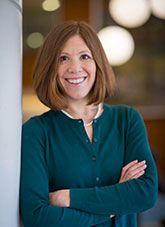The Change Nurses Can Make to Ensure the Safe Handling of Hazardous Drugs
Oncology nurses are administering hazardous drugs every day. While some take precaution by using Personal Protective Equipment (PPE), others take a much riskier approach.
AnnMarie Walton, PhD, MPH, RN, OCN, CHES
AnnMarie Walton, PhD, MPH, RN, OCN, CHES

In working with patients who have cancer, oncology nurses are administering hazardous drugs every day. While some take precaution by using Personal Protective Equipment (PPE), others take a much riskier approach that could be harmful to not only themselves, but also to the people around them.
Seth Eisenberg, RN, ASN, OCN, BMTCN,

At the recent ONS Annual Congress, Seth Eisenberg, RN, ASN, OCN, BMTCN, and AnnMarie Walton, PhD, MPH, RN, OCN, CHES, spoke to a crowd of 300 healthcare professionals about the importance of safe handling of chemotherapy and other hazardous drugs for oncology practitioners.
Studies conducted over the last 3 years, found 36% of wipe samples at six hospitals were above limit of detection for the cancer drug cyclophosphamide, with the drug found on patient chairs, countertops, pens, and elevator buttons. In addition, hand swipe samples for cyclophosphamide were positive not just for oncologists and nurses, but also volunteers, ward clerks and housekeeping. Last year, 55% of urine samples tested positive for cyclophosphamide, and the highest percentages were found in unit clerks and other departments that don’t prepare the treatment.
“If we looked at these drugs as bags of Ebola, instead of bags of drugs, we might think about how we handle them a little differently,” said Eisenberg, who is the professional practice coordinator for infusion services at Seattle Cancer Care Alliance.
He explained that the National Institute for Occupational Safety and Health (NIOSH) does not have enforcement capability to ensure hazardous drugs are being safely handled and the Occupational Safety and Health Administration (OSHA) does not have the resources to do so.
There is, however, the United States Pharmacopeial (USP), which sets standards for hazardous drug (HD) handling from delivery to disposal. Eisenberg applauded the organization and explained to the audience that the rules it sets are something each state’s Board of Pharmacy can enforce, even within hospitals.
Taking the First Step
Even without proper reinforcement, there are recommendations out there for anyone administering chemotherapy drugs. Eisenberg and Walton, who is a postdoctoral research fellow at the University of North Carolina at Chapel Hill School of Nursing, emphasized that everyone should be double gloving with American Society of Testing and Materials (ASTM)-tested chemotherapy gloves and wearing “single-use” chemotherapy-resistant gowns.
Along with the use of closed system transfer devices (CSTDs), other recommendations include training all personnel in hazardous drug (HD) handling, having spill kits available, spiking IV bags with a neutral solution, and when cutting or crushing oral HDs, making sure it is done inside of a biologic safety cabinet (BSC) because it could be harmful to inhale the drugs.
During the presentation, an audience response poll found that 38% of oncology nurses didn’t change their gown or double-glove because this PPE was not conveniently located. Many others didn’t wear them because it was too uncomfortable.
“When you don’t practice safely or you touch an IV pole or you touch an elevator button, that exposes everybody else on the unit, so if you’re not going to think about yourself, think about your colleagues,” said Walton.
She acknowledged that in 2009, when she was trying to make safe handling changes at the North Carolina Cancer Hospital, there was some pushback from fellow nurses because they had been stuck in their old habits and had the “it hasn’t happened to me yet” mentality.
With help from other clinical nurses, Walton was able to make big changes, however, such as converting all gloves to chemotherapy gloves, putting chux pads over toilets in patient areas, putting new trash facilities in bathrooms, as well as creating signs, educating family members, and training both nurses and ancillary staff. The entire rollout of the changes took about 2 years to complete.
Call to Action
Both presenters urged nurses to self-advocate and not be afraid to change the rules at not only the hospital level, but the state level, too. Currently, 47 out of the 50 states don’t have a law.
“It only takes one voice to find somebody in your state legislature who is sympathetic to your cause,” Eisenberg encouraged. “Find someone whose family member was treated for cancer because there’s a connection there. Get them involved, and that’s all you need—one voice to make the change.”
Walton reinforced that message by telling the audience to get involved with professional organizations and knowing who their legislative liaisons are.
A very personal story that puts their presentation into perspective was shared by an oncology nurse. She told how, as a young nurse, she spilled cyclophosphamide on her arm. She washed it off and didn’t report it. Then a few years later, she was diagnosed with infertility. Her doctors couldn’t figure out what was wrong, until one doctor said to her, “you’re a cancer nurse, that’s probably why.”
That nurse has since donated her eggs for testing to see if, in fact, the spill of the chemotherapy drug was to blame for her infertility. She wound up with a happy ending and is now the mother of a healthy 1-year-old son, but she wants to make sure no other nurse will ever have to go through infertility.



